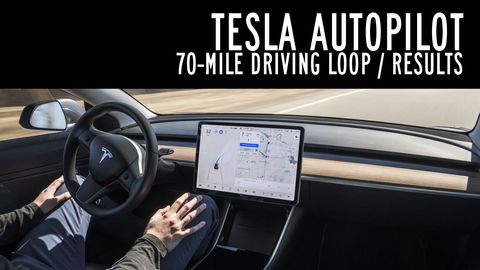Drivers Too Trusting of Semi-Autonomous Technology, IIHS Says

A survey conducted by the Insurance Institute for Highway Safety claims drivers regularly abuse semi-autonomous driving systems.With hundreds of GM Super Cruise, Tesla Autopilot, and Nissan ProPilot users surveyed, many users said they would perform non-driving tasks while using the system, with some being locked out due to driver inaction.Despite these findings, a majority of users acknowledged that driver monitoring systems and autonomous driving lockouts were a positive addition to the safety features of the models.
Self-driving cars were supposedly just around the corner a few years ago, but that prediction hasn’t panned out. Sure, you can hail an autonomous taxi in certain parts of the US, and companies including Tesla, General Motors, and Nissan offer some form of semi-autonomous driving technology.
But there aren’t any fully self-driving cars on the market today. Manufacturers, engineers, and consultants around the globe are working to make these autonomous vehicles a reality, but a combination of wary regulators and human design challenges has kept driver’s seats occupied for the time being.
Half with This Tech Onboard Would Do Non-Driving Tasks
According to survey data from the Insurance Institute for Highway Safety, drivers with semi-autonomous vehicles are becoming confident enough in the self-driving systems to perform non-driving-related activities like eating or texting. Specifically, 53 percent of General Motors Super Cruise users reported a willingness to perform non-driving tasks, while 42 percent of Tesla Autopilot users reported a similar sentiment. Only 12 percent of Nissan ProPilot Assist users said they would be confident enough to take their attention away from driving.
This is a troubling finding, given that these systems aren’t capable enough to replace a human driver and require constant monitoring. While the systems can aid in maintaining speed, following distance, and lane position on long highway drives, it’s been proved that driver assistance systems aren’t failproof. Still, many consumers aren’t well informed on the limitations of such technology, even after getting a dealership briefing when picking up their new cars.
“The big-picture message here is that the early adopters of these systems still have a poor understanding of the technology’s limits,” said IIHS president David Harkey. “But we also see clear differences among the three owner populations. It’s possible that system design and marketing are adding to these misconceptions.”
A study from the National Highway Traffic Safety Administration shows that up to 273 crashes involved Tesla’s autopilot system in 2021. Tesla
We’re already seeing the effects of mismanaged marketing, with numerous fatalities related to improper Tesla Autopilot usage documented. The technology itself makes a big difference as well, according to the IIHS survey, with Super Cruise users being the most prone to engage in unsafe behavior while the system is switched on. This is likely a result of the system’s relaxed stance toward steering-wheel monitoring, allowing Super Cruise users to take their hands off the wheel for extended periods of time. Both Tesla and Nissan require the driver’s hands to remain on the wheel, though bad actors were quick to find workarounds.
Understanding the Process
Manufacturers understand this technology is risky and have added varying styles of driver supervision to the semi-autonomous systems. Nissan’s system allows for driver steering input without shutting off, whereas Autopilot and Super Cruise are switched off when the driver intervenes. The Super Cruise and Autopilot systems are less forgiving about driver intervention than ProPilot and will temporarily lock drivers out if they don’t monitor the road ahead. However, the survey showed that driving tendencies were somewhat similar across different systems, and IIHS believes the main differences in usage were a result of how the systems were marketed.
Around 40 percent of Super Cruise and Autopilot users said they had been locked out of the system before. This means those drivers repeatedly ignored the system’s warnings and failed to monitor the road. That said, almost all respondents viewed the attention warnings and lockout systems as a positive attribute.
It’s clear that autonomous driving technology has a long way to go, and the manufacturers backing it will play a vital role in the safe rollout of future versions. While these systems are expected to become a part of our driving future, knowing and advertising their limitations will be essential to using them appropriately and efficiently, for safer roads everywhere.

This content is imported from OpenWeb. You may be able to find the same content in another format, or you may be able to find more information, at their web site.



